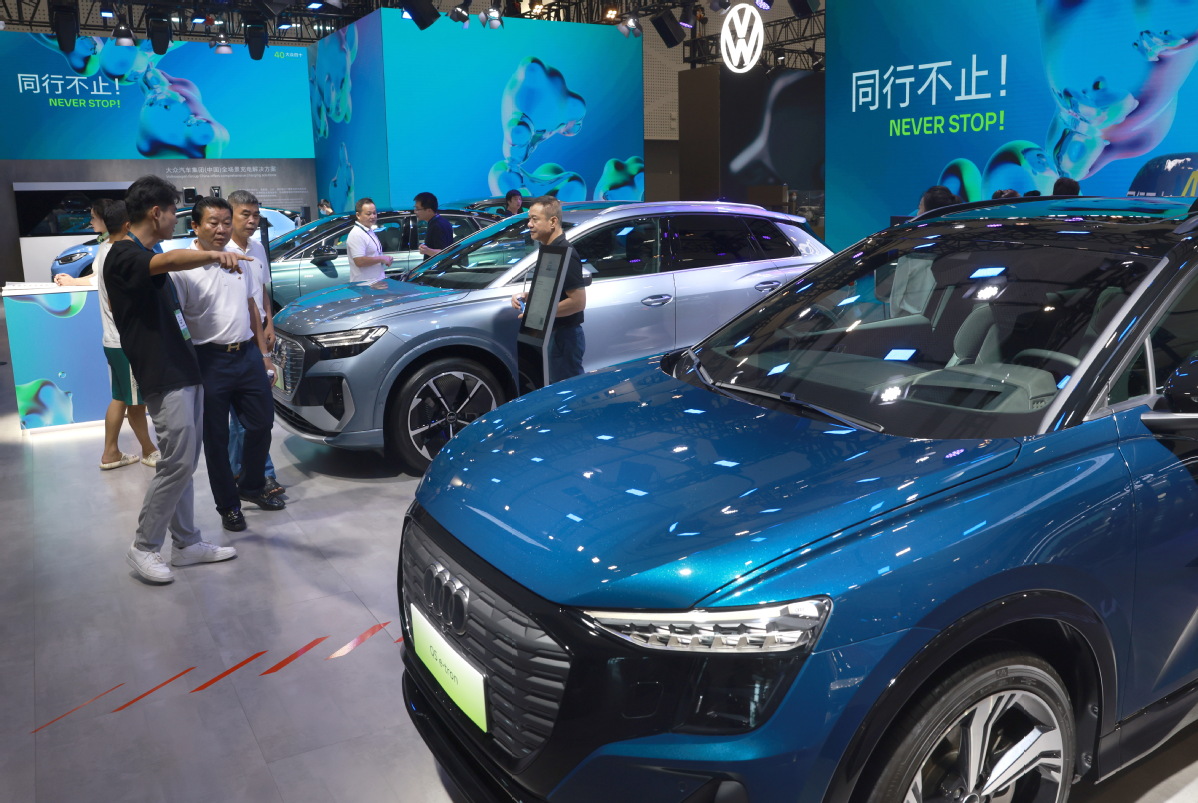
Vehicles on display at the 2024 World New Energy Vehicles Congress that commenced on Friday in Haikou, Hainan province. SU BIKUN/FOR CHINA DAILY
Hainan province is set to capitalize on the benefits of its free trade port to hasten the establishment of an internationally-focused hub for new energy vehicle technology services and product exports, said Feng Fei, Party secretary of Hainan province, at the 2024 World New Energy Vehicles Congress, which commenced on Friday in Haikou.
The province aims to demonstrate the comprehensive application of new energy intelligent connected vehicles, Feng said, further outlining Hainan’s commitment to driving growth of the entire industry chain of green hydrogen and setting up a roadmap for the hydrogen fuel-cell vehicle sector.
Hainan has been a key player in organizing the congress, aiming to establish itself as a significant trendsetter in driving technological innovation and industrial transformation in the automotive sector.
By the end of August, the number of new energy vehicles in Hainan had reached 361,000, accounting for 17.4 percent of the total number of its vehicles. So far this year, 71,300 new energy vehicles have been sold and used, representing a year-on-year increase of 9.76 percent. New energy vehicles account for 54.64 percent of the newly added vehicles in the province, according to the department of industry and information of Hainan province, which indicates that for every two cars sold in the province, at least one of them is a new energy vehicle.
A Haikou resident surnamed Wen has observed a trend among his friends in the past two years, with many transitioning from fuel vehicles to new energy cars and sharing their positive feedback with him.
“Using new energy vehicles in Hainan is becoming more convenient, with easy charging options and cost-effective purchases,” Wen noted, adding that the low travel costs and environmental benefits associated with new energy vehicles further increase their appeal.
Hainan aims to significantly increase the adoption of new energy vehicles in the coming years, reported Hainan Daily. By 2025, the province targets having new energy vehicles represent over 20 percent of total vehicle ownership, with clean energy vehicles comprising 100 percent of newly added and replaced vehicles in public service and social operation sectors.
Looking ahead to 2030, Hainan’s goal is for new energy vehicles to make up more than 45 percent of total vehicle ownership, with all vehicles in public service and social operation sectors, except for special purposes, transitioning to clean energy.
Furthermore, by 2030, the province aims for 100 percent of new additions and replacements in the private vehicle sector to be new energy vehicles.
chenbowen@chinadaily.com.cn
